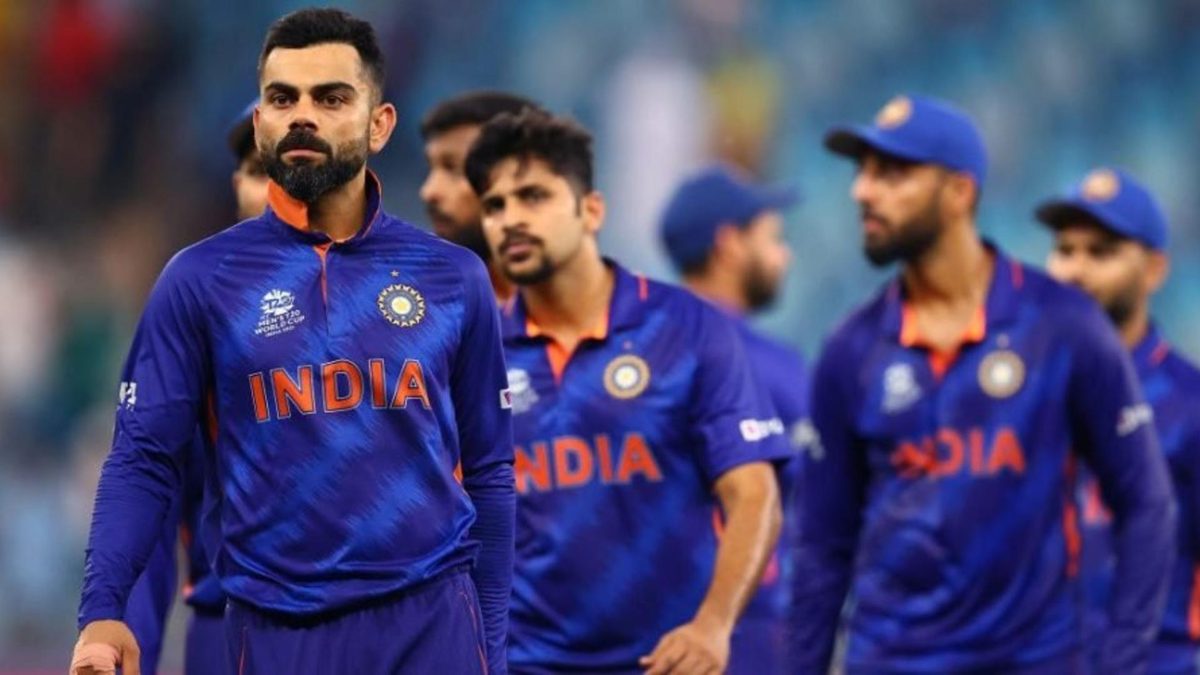
For a team that was counted as one of the favourites ahead of the tournament, India have suffered two debilitating losses, leaving them at the brink of a group-stage exit for the first time since the 2012 edition of the T20 World Cup. Aadya Sharma tries to investigate the reasons for the uninspiring performances so far.
Sign up to bet365 to be entered into a draw for the chance to win a Wisden Hoodie, terms and conditions apply, more information here. 18+ begambleaware.org
Fluctuating batting order, lack of clarity at the top
In four games (including the two warm-ups), India twice tried out two different opening combinations – the first-choice seemingly being KL and Rohit, and the other being KL and Ishan. Both pairings looked great in the warm-ups, but succumbed early when it mattered the most, making one wonder why there were two different combinations tried in the first place.
The juggle at the top led to an unclear approach in the powerplay: against Pakistan, both KL and Rohit were undone by some quality pace, and against NZ, Kishan and Rahul were guilty of poorly-executed strokes, leaving extended pressure on the batters to follow (Kohli and Pandya have themselves been in indifferent form). In the second game, Rohit came at a less-accustomed position of three, and was forced to try and maximise on the remainder of the powerplay when he himself takes time to settle. In the end, it turned out to be a hotch-potch exercise: as Kohli summarised at the end, “the team wasn’t brave enough”.
Lacklustre with the new ball
With Deepak Chahar not part of the squad, and Bhuvneshwar Kumar in scratchy form, India’s new-ball attack already looked like it lacked proper wicket-taking bite. Varun Chakravarthy is a great prospect, but he’s more of a restricting spinner, who is more likely to get wickets early when there’s a bigger total to defend. With India’s two totals of 151 and 110 not being quite enough, Chakravarthy’s lengths and lack of turn didn’t really bother either Pakistan or New Zealand.
Bumrah did well to string together two neat spells, but with Bhuvneshwar underwhelming, and Shami not quite a new-ball bowler, India let the batters ease their way to starts, leaving them in positions where they just couldn’t claw their way back. R Ashwin could have been a better option to have, for he’s known to have the knack to prise out wickets at any point, but then, hindsight is a great gift.
The toss disadvantage
Kohli’s luck with tosses has been historically rotten, and it’s not something that’s in anyone’s hands, but with back-t0-back toss losses, India has been at the wrong end of a massive disadvantage that team’s batting first are facing in this tournament.
Teams batting first have lost 15 of 19 matches so far, with Kohli himself admitting, after the Pakistan loss, that it would be “a big factor” at the tournament, especially with dew creeping in in the second half and complicating things further for the bowling team.
With two big games lined up for India one after another right at the start, India’s double coin-toss loss pushed them on the backfoot, and an underwhelming batting performance really didn’t help their cause after that.
Demanding schedule went against India
Most of the members of this Indian team arrived in the UK in May (or Sri Lanka the following month), and have spent the last five months shuttling from bubble to bubble. It’s really how cricket is played these days, and Bumrah, in the post-match presser, clearly indicated that bubble and mental fatigue had crept in, with extended time away from families being challenging. Post the remainder of IPL 2021, India quickly moved into the World Cup bubble, making it a tiresome calendar for the core group, and hardly any respite in sight with more cricket coming right after.
And then, rather contrastingly, India got a week-long break after the Pakistan game, leaving them with an awkward pause after a ten-wicket thrashing. And while that’s not exactly an excuse for the defeats, it didn’t exactly help that most of the side experienced burnout before they played their first game of such a big tournament.
The first-choice XI didn’t really play much together
India’s first-choice XI has hardly played any T20I cricket together in the lead-up to the T20 World Cup, a problem other under-performing teams such as West Indies and Australia are also facing. On paper, the team looks strong, but when your batters have little experience of playing alongside each other, it can get really difficult to find collective rhythm and an aligned approach.
While half of the current lot featured on the long England tour, the other half was in Sri Lanka, playing in what appeared like a second-string side. However, as many as six players from the latter squad are part of the World Cup group, with quite a few combinations playing together for the first time. For example, against Pakistan, Bumrah and Shami bowled together in a T20I together for the first time in 21 months; Rohit and KL last opened together in a T20I in March, and before that, February 2020. The pandemic has complicated things, as have the lack of T20Is this year. At the end of it all, India looked like an assortment of good players, but hardly a good team combined.








